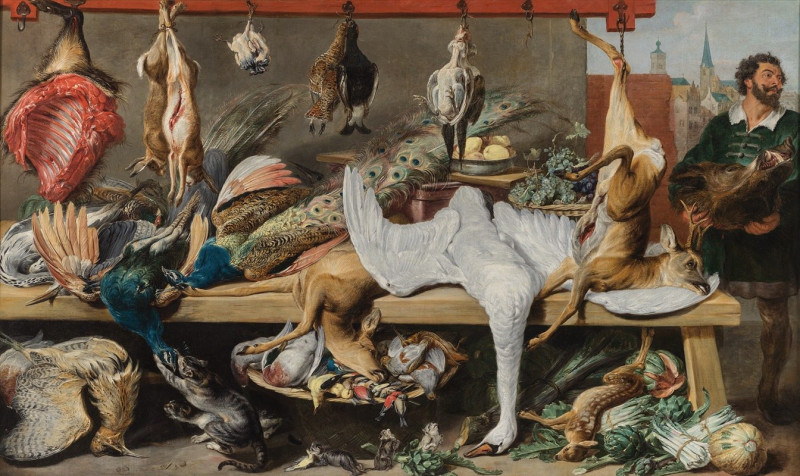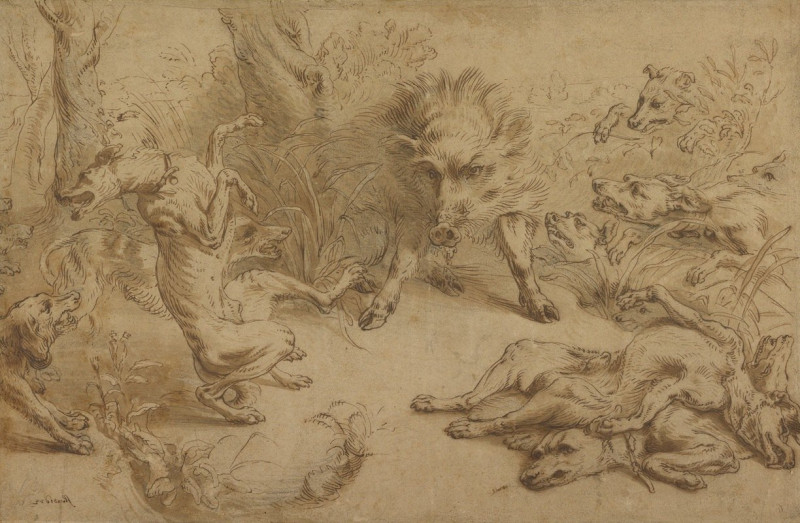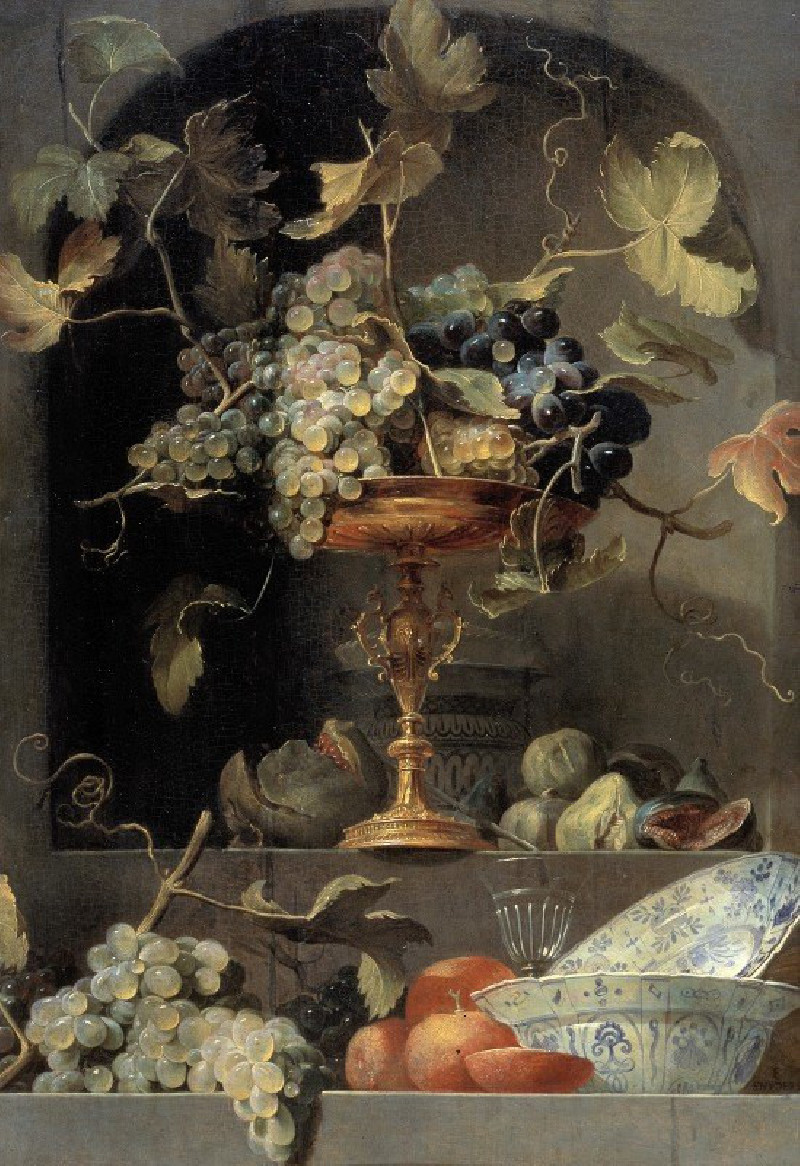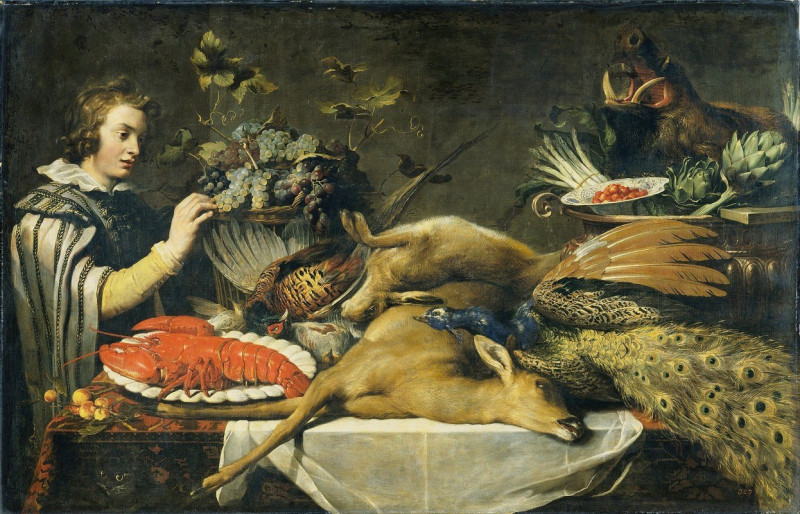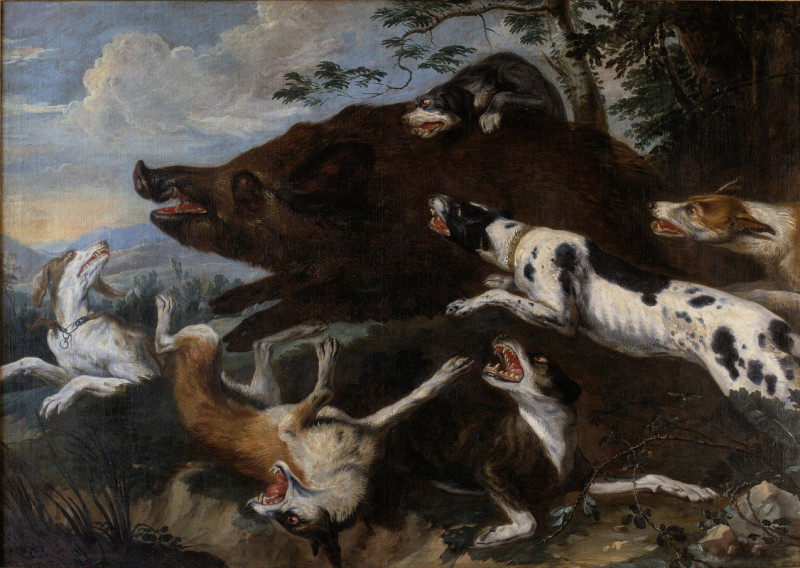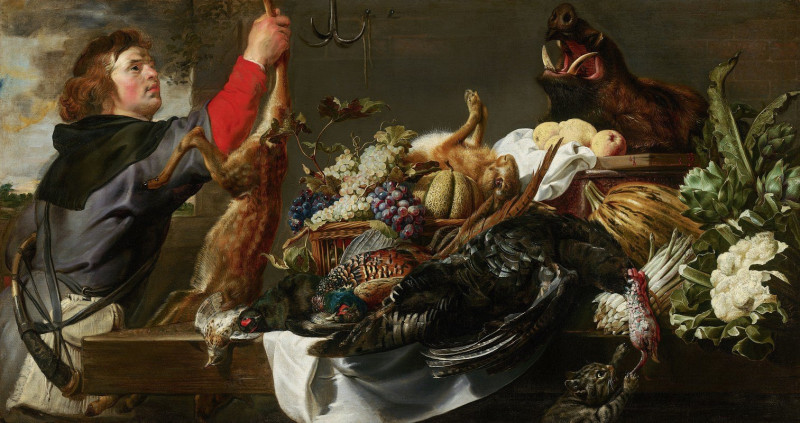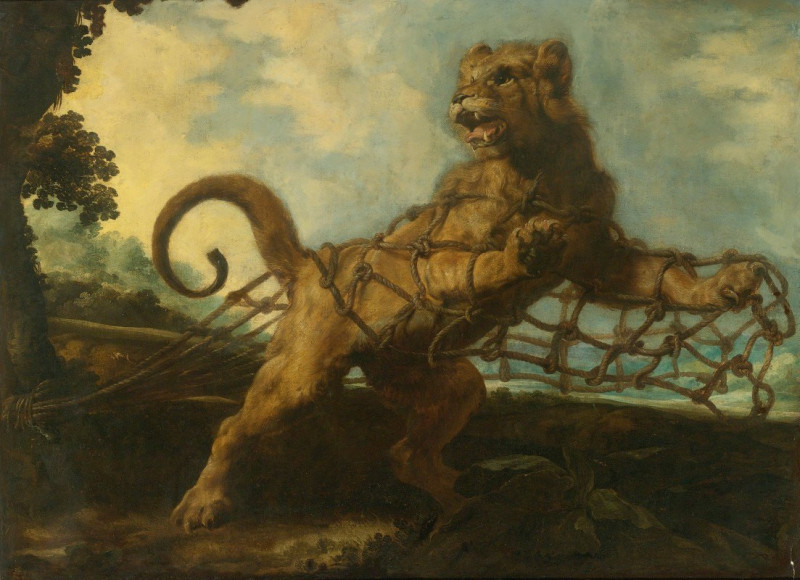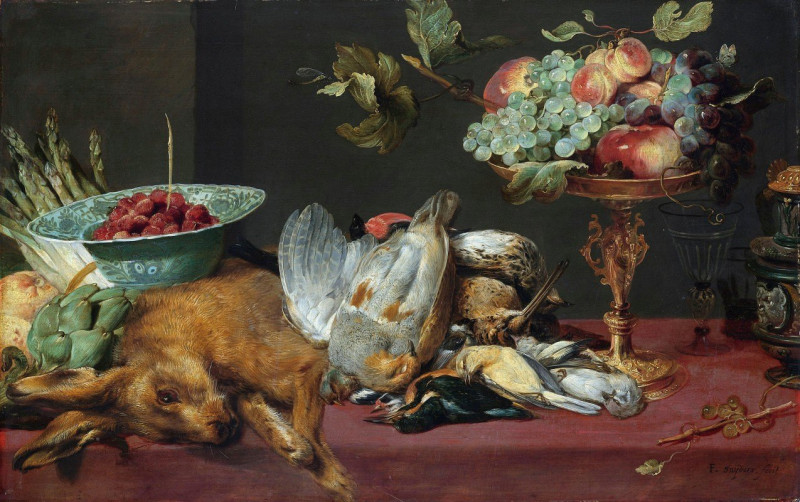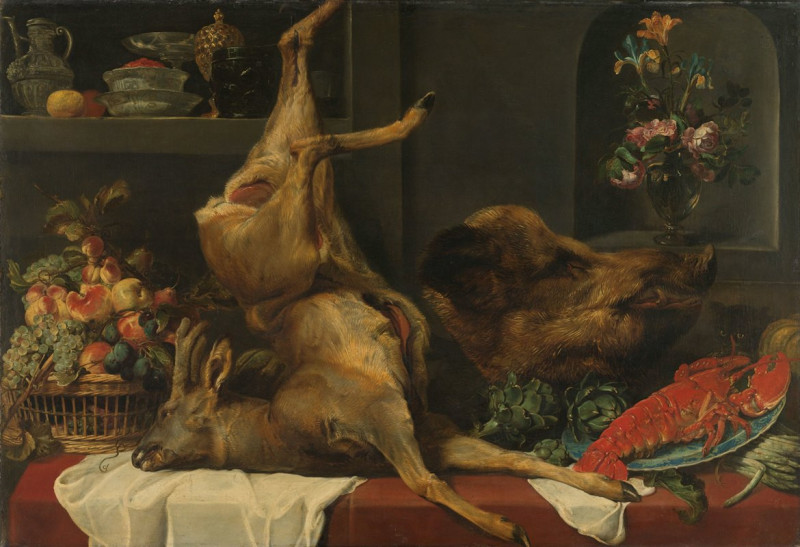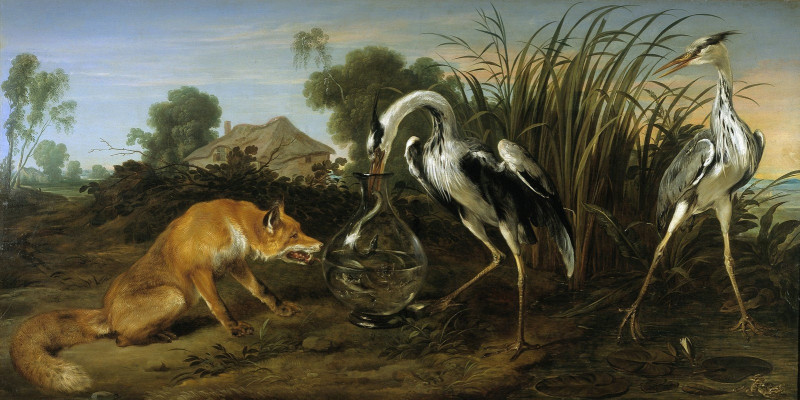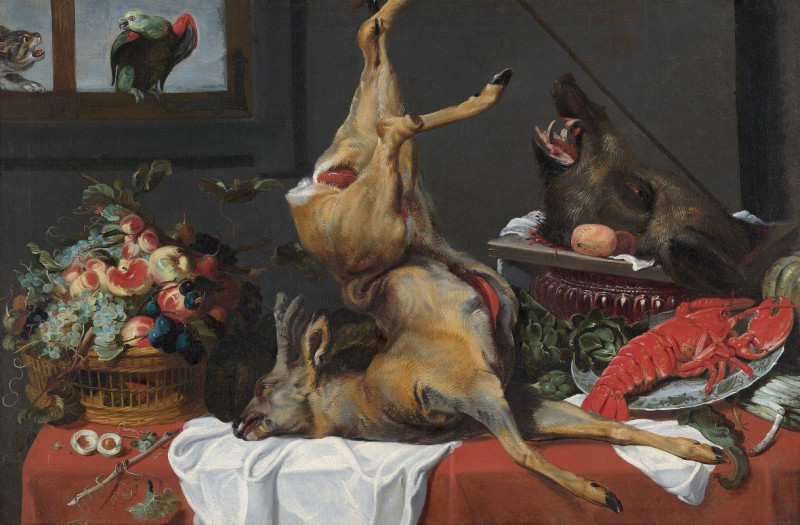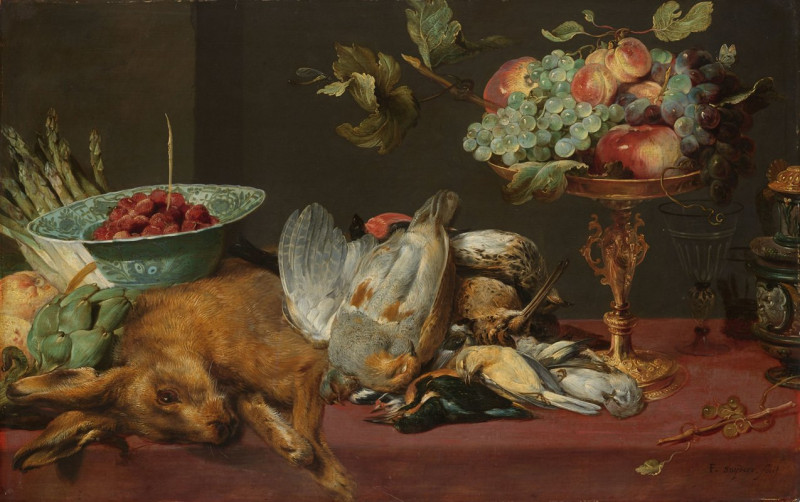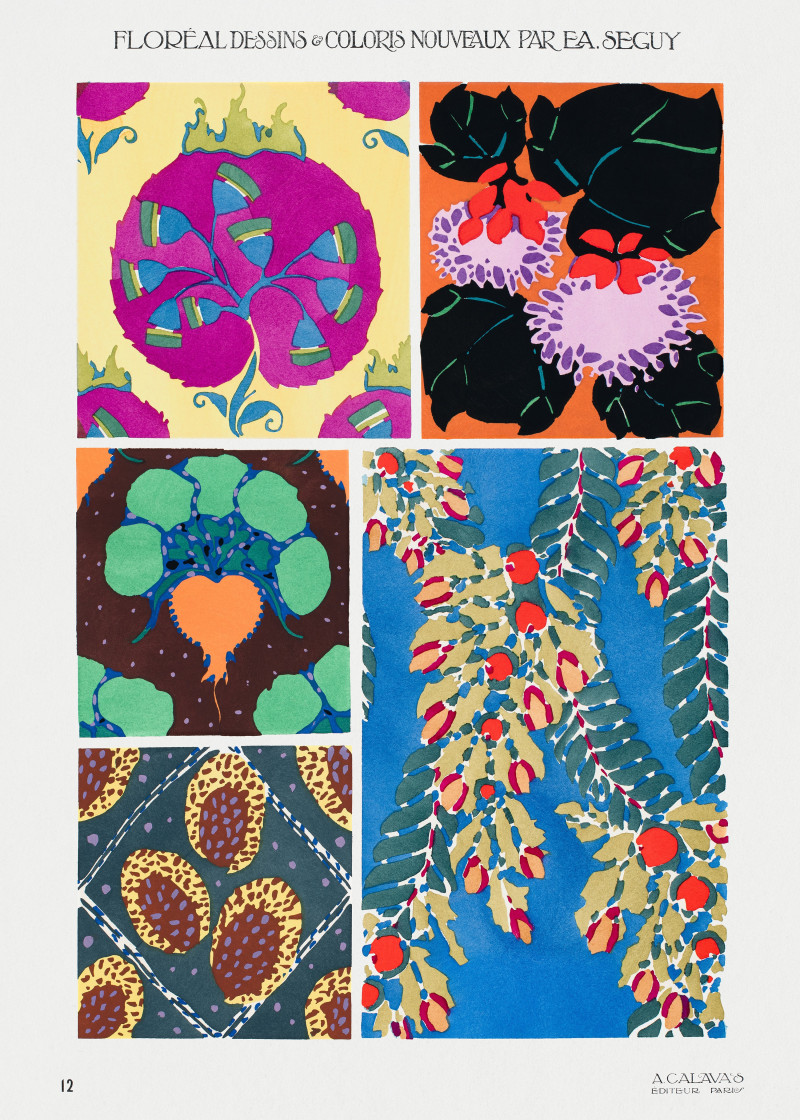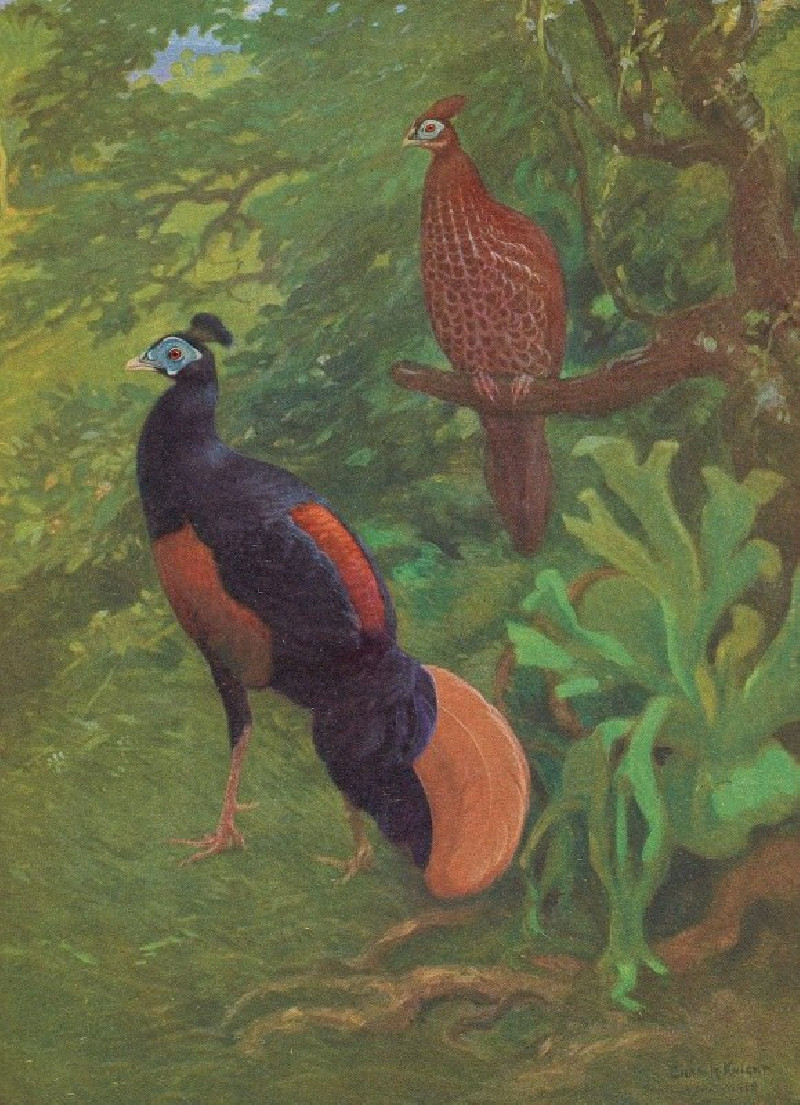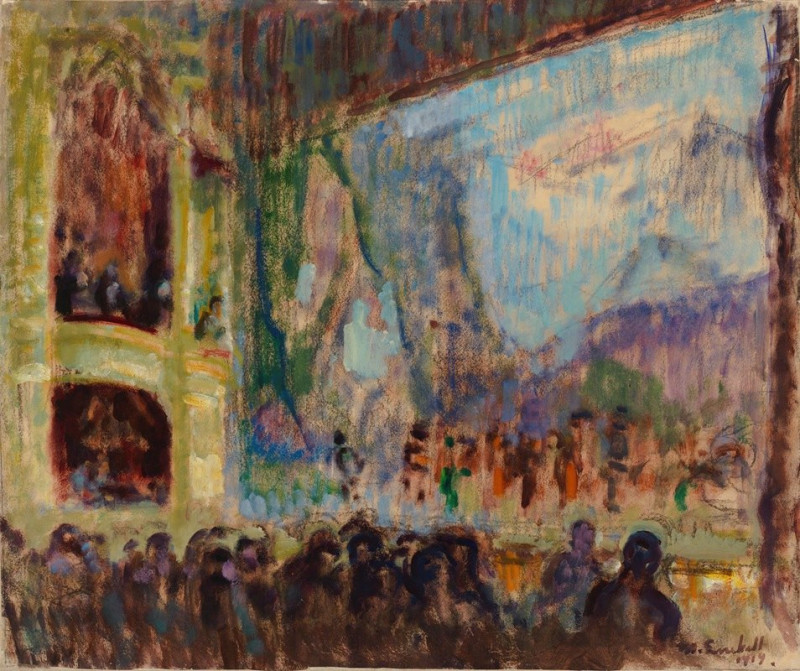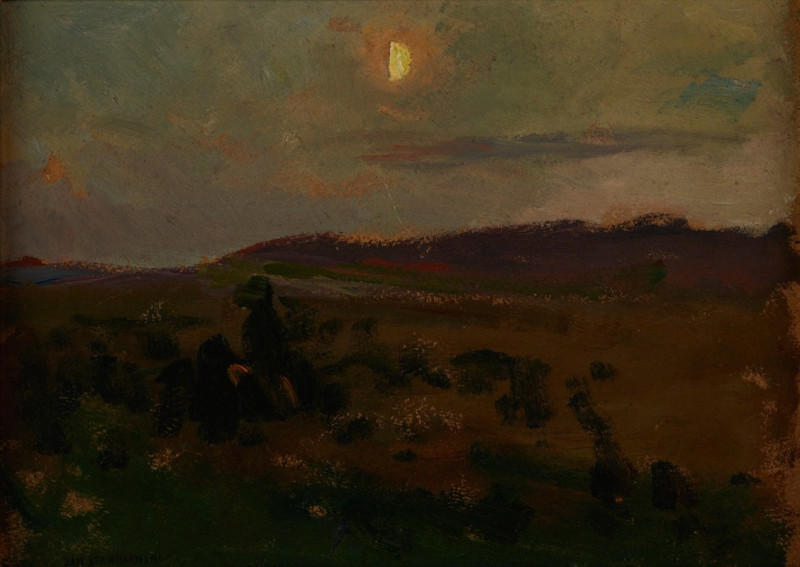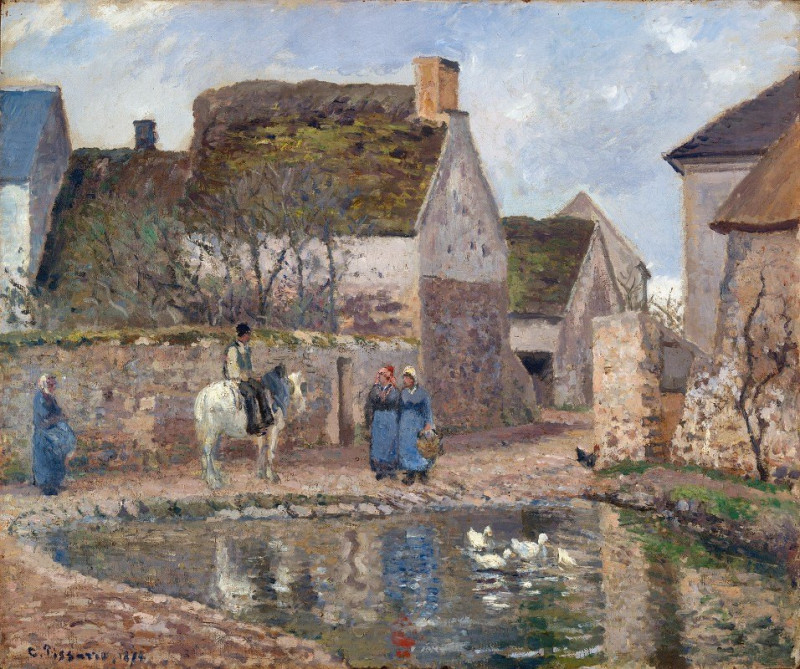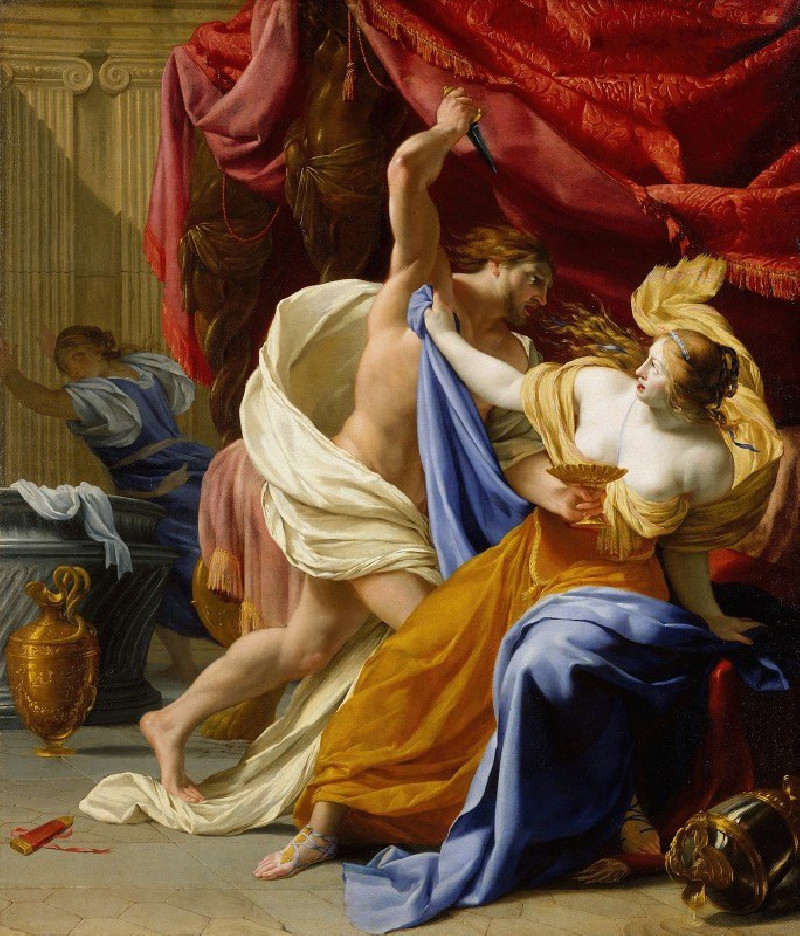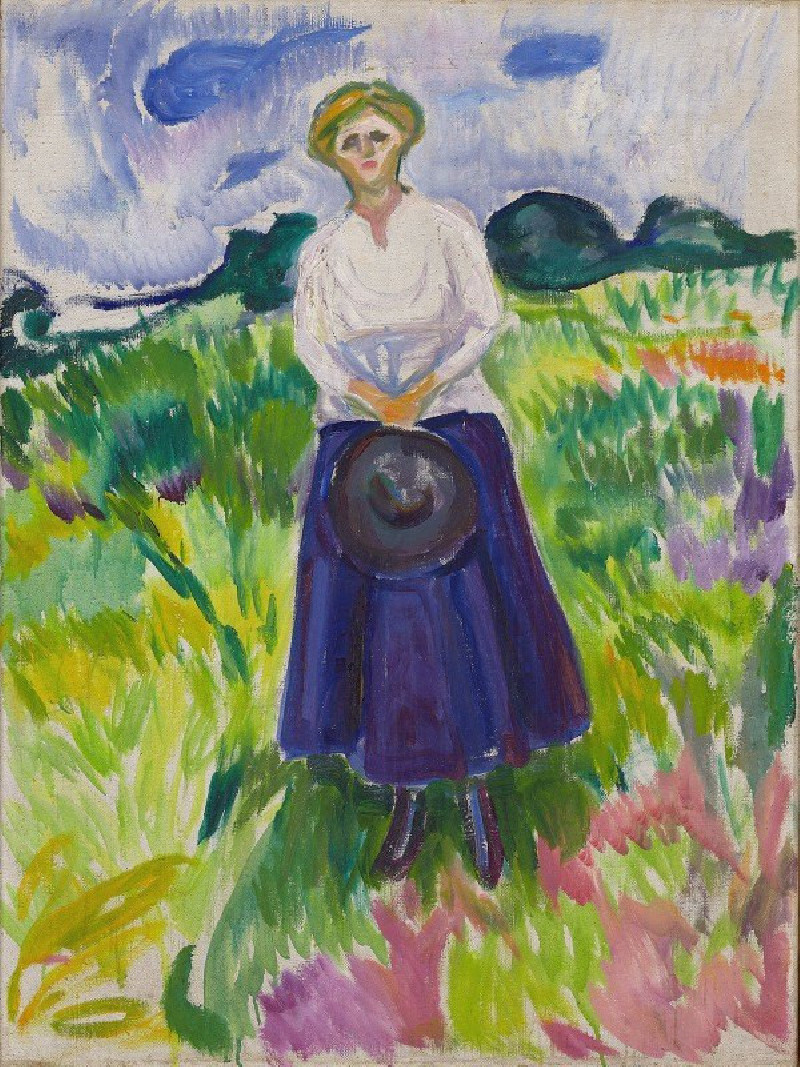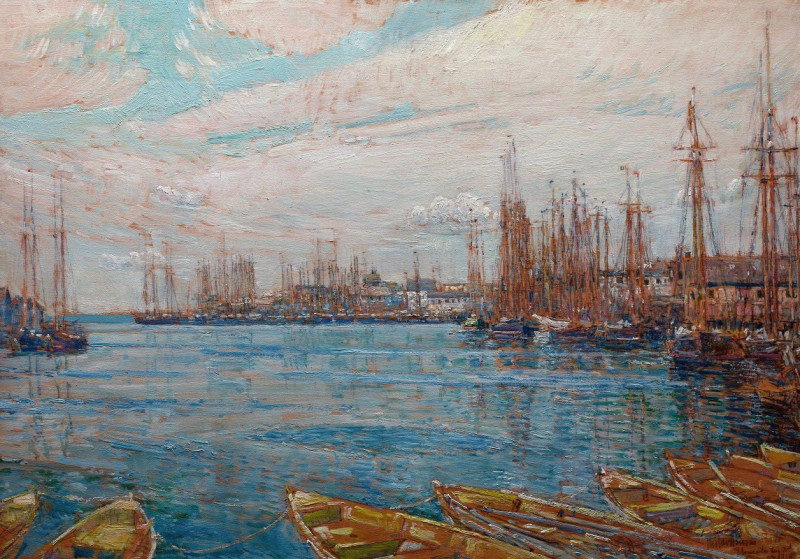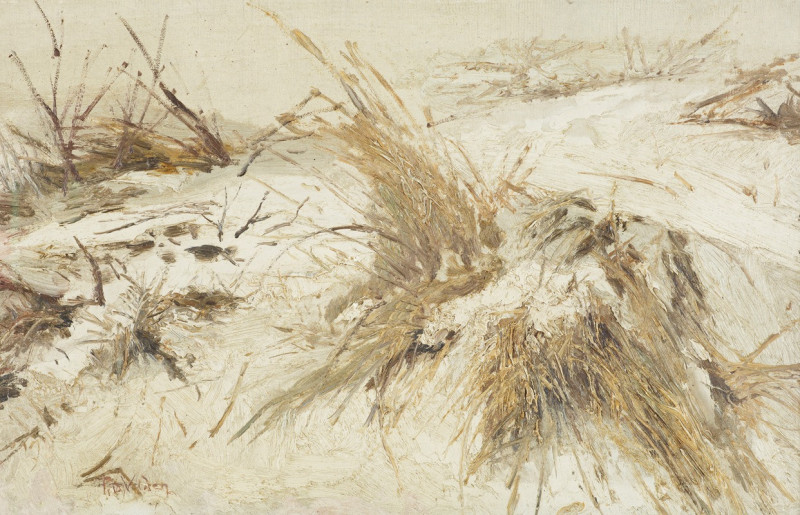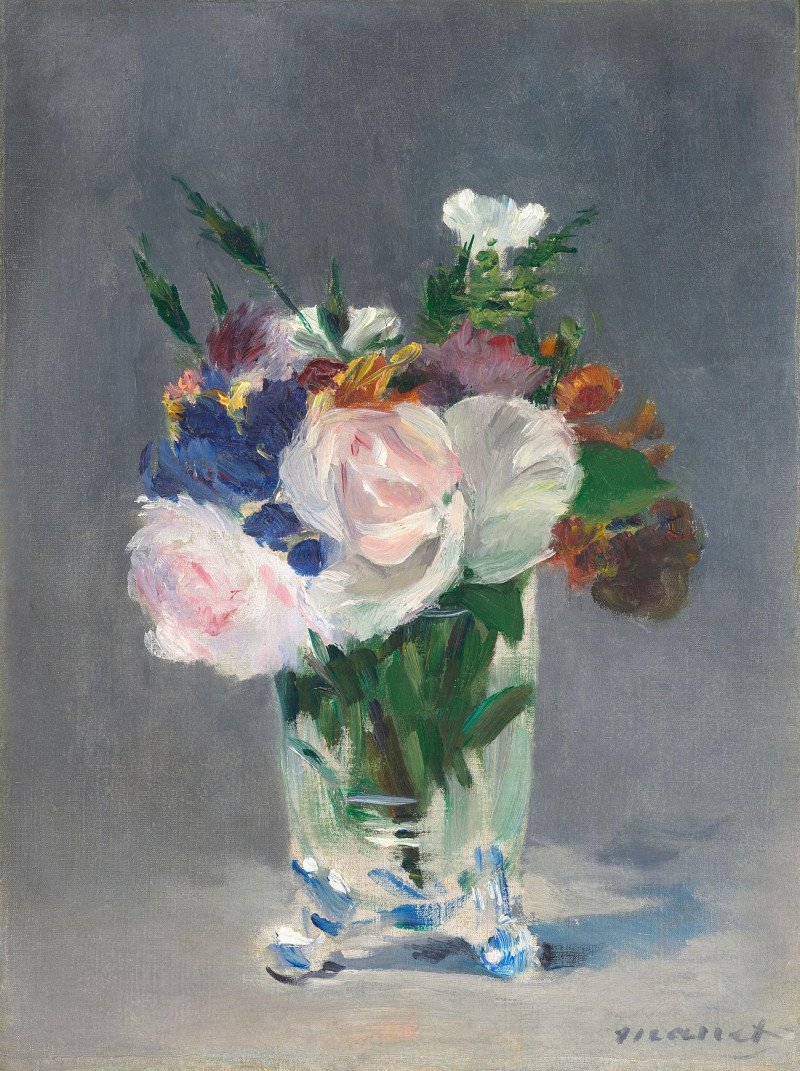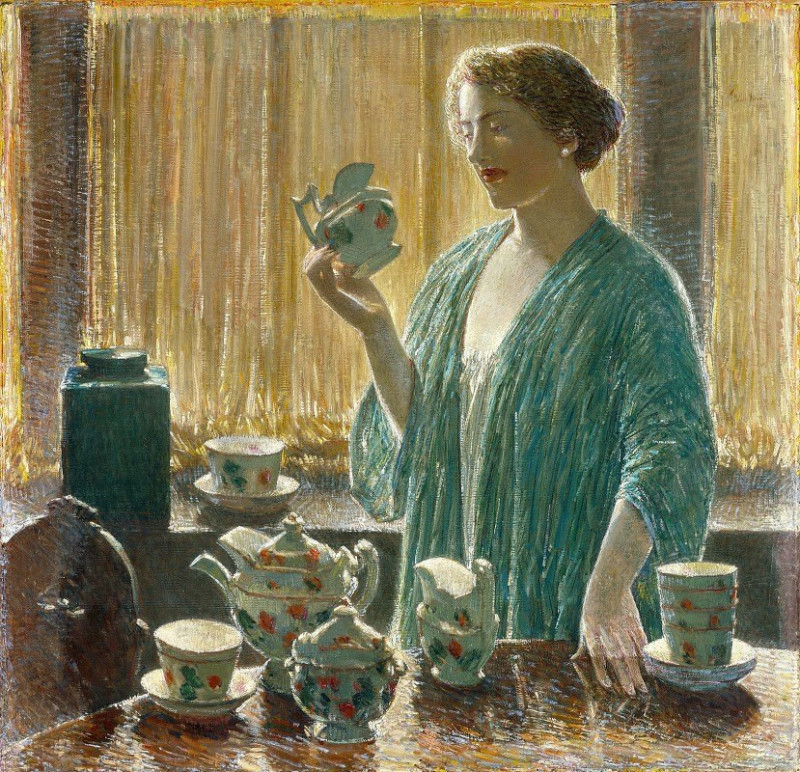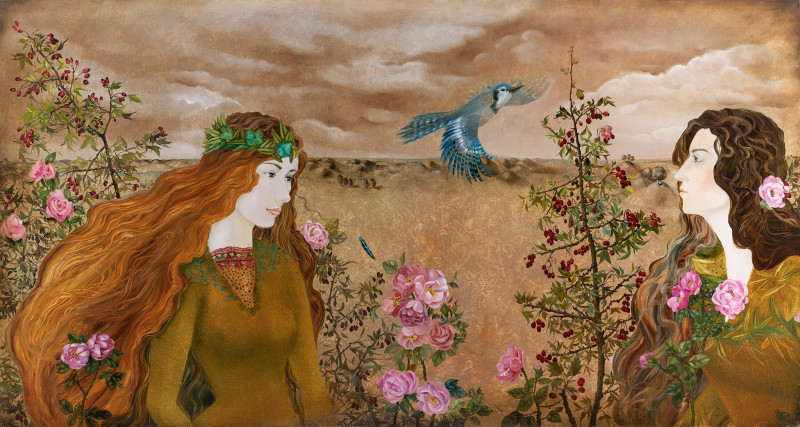Game Market (1630s)
Technique: Giclée quality print
Recommended by our customers
More about this artwork
"Game Market," painted by Frans Snyders in the 1630s, offers a rich and textured tableau that captures the vibrancy and abundance of a bustling market scene. This painting, masterful in its realism and attention to detail, vividly presents an assortment of game and produce likely to have been found in a 17th-century European market.In the forefront, Snyders brings the natural world to life with an array of expertly rendered animals, each contributing to the narrative of market trade and culinary culture. The table is laden with a swan, its wings spread wide in a final, graceful display, accompanied by peacocks whose brilliant plumage adds a splash of color to the composition. Nearby, hares and wild boars hang alongside birds of various species, showcasing the game meats that were prestigious commodities in that era.Beneath this display, smaller creatures like fish and fowl scatter the lower part of the canvas, and a dog actively participates in the scene, further emphasizing the hustle and energy typical of a market environment. The inclusion of vibrant vegetables and fruits, notably grapes and artichokes, not only enhances the naturalistic setting but also illustrates the intersections of trade and daily life.On the right, a figure, presumably the vendor or a market-goer, stands contemplating the scene or perhaps negotiating a sale. His expression and attire are painted with the same meticulous care as the rest of the scene, underscoring Snyders' skill in portraying human emotions and cultural contexts.Overall, "Game Market" is a testament to Frans Snyders' prowess in still life and animal painting.
Delivery
Returns
Frans Snyders or Frans Snijders (11 November 1579, Antwerp – 19 August 1657, Antwerp) was a Flemish painter of animals, hunting scenes, market scenes, and still lifes. He was one of the earliest specialist animaliers and he is credited with initiating a wide variety of new still-life and animal subjects in Antwerp. He was a regular collaborator with leading Antwerp painters such as Peter Paul Rubens, Anthony van Dyck, and Jacob Jordaens.

